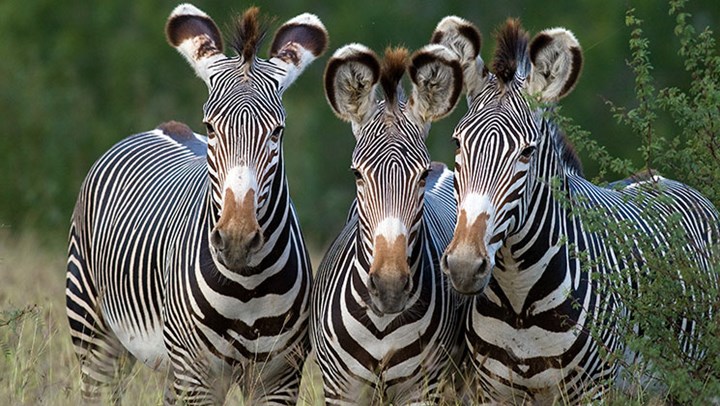
by Catherine Semcer - Sunday, September 9, 2018

An ecological disaster is unfolding in East Africa as the nation of Kenya experiences sharp losses in biodiversity that even the country’s government can no longer ignore. Following the imposition of a near-total ban on hunting in 1977, the country saw declines of up to 88 percent of its big game animals. Now, Kenya’s former Environment Cabinet Secretary, Judi Wakhungu, has publicly stated that the nation is running out of habitat, especially in the critical Laikipa ecosystem, to support the animals that remain as human settlement erodes remaining wildlands. For conservationists, Kenya’s habitat crisis is an unwelcome realization following decades of warnings about the consequences of abandoning holistic conservation programs using hunting to create economic incentives for habitat conservation. Whether or not the crisis can be ended, as Kenya’s ability to conserve wildlife at the scale it once did remains to be seen, it is certain that the role of hunting and other sustainable uses of wildlife will be a critical part of the serious conversations that emerge as stakeholders search for a solution.
Kenya was once considered a crown jewel of African hunting with the abundant game of the Massai Mara, Laikipia, Samburu, Meru and Marsabit attracting the likes of Theodore Roosevelt, Earnest Hemmingway and Robert Ruark. With the backing of Western animal rights extremists, the nation banned hunting in 1977 under the government of President Jomo Kenyatta, calling it a “barbaric relic of colonialism.”
The move had an immediate impact on the country’s conservation efforts. While Kenya’s wildlife is owned by the State, communities and private landowners had profited by charging hunters for access to property they had maintained as wildlife habitat, creating a critical economic incentive to keep large areas in their natural state. According to a post-ban report from the African Wildlife Foundation, “The Opportunity Costs of the Hunting Ban to Landowners in Laikipia, Kenya,” a private ranch might make pre-tax profits of over $50,000 each year from a small-scale hunting lease—more than could be earned by game or livestock ranching. The report also stated that while photo tourism is not economically viable in many of these rural areas, partnering it with hunting where it is viable would increase both landowner earnings and incentives for conservation.
With the hunting ban removing those conservation options from the table, a perverse incentive to eliminate wildlife from areas to make room for livestock, one of the only remaining economic options, commenced. According to peer reviewed research published in 2016 by Kenyan and German Scientists, populations of many species of once common wildlife have decreased by 64 percent or more of their historic number while sheep, goats, cattle and other domesticated animals on the land increased by as much as 75 percent. The research found that giraffe, wildebeest, Grant’s gazelle, lesser kudu, Thomson’s gazelle, eland, impala, waterbuck and other wildlife populations had declined between 64 percent and 88 percent nationwide.
While some animals, like elephants and Cape buffalo are beginning to increase in number or stabilize in some areas, they are also beginning to stress the remaining available habitat and come into increased conflict with people. The result has been a growing number of revenge killings, especially of elephants. In January, 2017, seven elephants were killed outside Amboseli National Park, their bodies, and ivory, left to waste. Following the killings, the local governor spoke to the press saying that elephants had killed 37 people in the area in the last year alone. One was a 3-year-old boy who was trampled to death while walking home from church. Neither the illegal elephant killings nor the loss of human life are now unusual in the Kenyan bush. What is unusual is the international community’s general failure to respond to the unsustainable situation.
Kenya’s wildlife is in crisis and Kenya itself is at a crossroads. Many see its 1977 ban on hunting as the critical mistake that has led it to this point. But the Kenyan people and Kenya’s wildlife will not benefit from a wagging finger. What they require is a helping hand.
Private landowners in Kenya are eager to see the return of hunting. While that change in policy may be several years away, the newly formed International Wildlife Conservation Council (IWCC) within the U.S. Department of the Interior (DOI) has a unique and critical opportunity to engage their representatives in concert with representatives of the Kenyan Government and Governments of other African nations in a critical conversation about the benefits of hunting to wildlife conservation. Rather than allowing hunting to be viewed as a “barbaric relic of colonialism,” the IWCC can work to bring together partners not only within the DOI but also the U.S. State Department, U.S. Agency for International Development (USAID) and pro-hunting multi-lateral agencies like the World Bank, International Food Organization and others to help Kenya see the potential for re-integrating hunting into its conservation programs. Such actions would deliver not only healthy wildlife populations, but also rural economic development and diversification by building on existing Community Wildlife Conservancies.
The window for doing this however, is short. The numbers do not lie. Kenya’s wildlife is running out of time. It is up to hunters—like they have done so many times before—to step in before it is too late.
E-mail your comments/questions about this site to:
[email protected]
